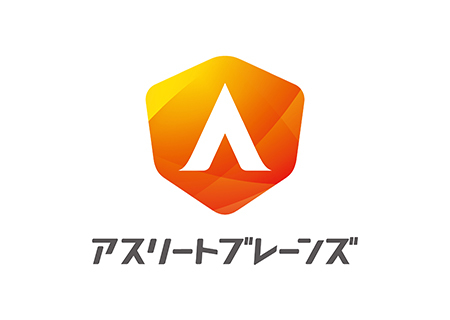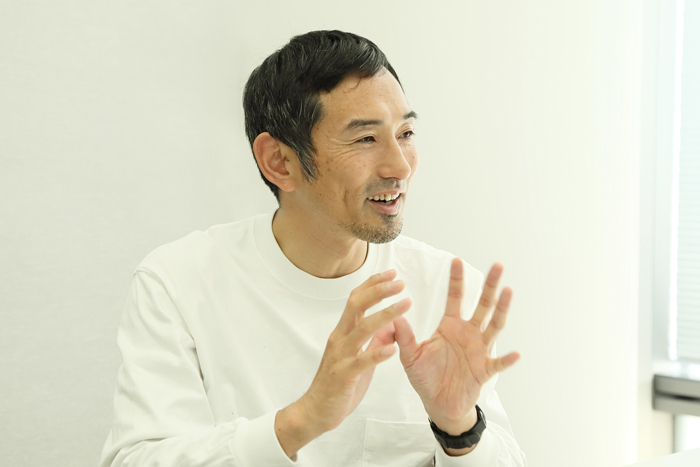A serialized interview column where Mr. Dai Tamesue freely discusses "things on his mind right now." The only set theme is "What is autonomy? What is tolerance?" Mr. Tamesue shares his thoughts on various "things on his mind" in response to the mysterious "interviewer's" unexpected prompts. Well then. What kind of stories will emerge this time...? Stay tuned.
──This marks the 24th installment of the series. Thank you for joining us again.
Tamesue: Thank you for having me.
──It's a commemorative milestone, though I'm not sure what exactly we're commemorating. Starting with this 24th installment, our new theme is "The World as Seen by an Athlete." As usual, I'll give a slightly lengthy lead-in. The trigger was the CCD cameras often seen on variety shows during "bungee jumps."
Tamura: Ah. You know, the one where a rod extends from the forehead area of the helmet, with a tiny camera attached to the end...
──Exactly. That one. Imagine if that camera got even smaller in the future, down to about the size of a bean. Then, say, you stuck it right on the forehead of a track athlete during an actual competition. You could experience the very moment they're aiming for the top of the world, right from the athlete's perspective.
Tamesue: As always, you come up with some strange ideas (laughs).
──A tiny CCD camera stuck to Tamesue-san's forehead. Then, viewers could experience the hurdles' bars rushing toward him at incredible speed, right alongside him. While indulging in that fantasy, I suddenly became intensely curious: What exactly is "seeing"? Sight, hearing, smell, taste, touch... Humans possess various senses to capture information. But thinking about it again, whether it's "see no evil, hear no evil, speak no evil" or "reading, writing, and abacus," "seeing" always comes first.
Tametsu: That's true, you're right.
──It really makes you realize how important "seeing" is. So, what kind of world do athletes like you, Tamesue-san, see? Or rather, what did you see? That's why you're joining us remotely today. Can you see my video?
Tamura: I can see you (laughs).
──So today, I'd like you to share your thoughts—not necessarily in any particular order—about what people should "see," "from where," "with what mindset," and "how." Whether from an athlete's perspective, a manager's perspective, or even as a parent, anything goes. That said, I realize just saying "Go ahead, talk freely!" might leave you at a loss. So first, from your perspective as an athlete, how do you think about "seeing"?
Tamura: Well, I think there are two kinds of "seeing." One is "seeing physically." You could call it placing your viewpoint. The other is placing your consciousness. It's the "seeing" in "seeing dreams" or "seeing into the future." It's perhaps closer to imagining. Seeing what can't be seen, so to speak.
──Now that you've explained it so simply, it's a bit awkward since I was planning to ask about this later in the interview, trying to sound clever. No, just talking to myself (laughs).
Tametsu: "Point of view" essentially means "the movement of the pupils." When someone's eyes dart around, it's not the entire eye moving, right? It's the pupils darting around. Take judo, for example: beginners tend to have pupils darting all over the place. They dart their pupils around constantly—following the opponent's hands, feet, gaze, belt, everything. This means their "point of view" is unstable. Conversely, the more advanced the practitioner, the less their pupils move. You could say they're observing everything in a kind of "blurred" state.
──I think I understand.
Tametsu: Regarding the other aspect of "seeing through imagery," from an athlete's perspective like mine, I believe it refers to the "point of force concentration."
──The focal point of power?
Tamesue: For example, when you're about to jump a hurdle five meters away, it's no good if your consciousness (your image) is focused on the spot just before that hurdle—the point where you'll jump off one foot. By the time you think "Oh!", your body is already over that hurdle. And without a moment's rest, the next hurdle is already approaching. So, while you naturally place some "focus" on the hurdle right in front of you, your "conscious (imaginative) eye" is vaguely looking at, say, 30 meters ahead.
──I see. "Vaguely" again?
Tamura: Just like your "physical eyes," the more your "mind's eye" focuses on what's immediately in front of you, the more it causes what's called tunnel vision. To put it simply, you stop taking in the surrounding scenery.
──You see everything without really looking. It's almost like Miyamoto Musashi.
Tametsu: That's what it means to have no openings, I suppose. If you focus your gaze, trouble comes. In the judo example I mentioned earlier, apparently even the slightest movement of the pupil can reveal to your opponent what you're about to do next, what technique you're preparing to use.
──So, "vague awareness." Athletes see the world with "vague awareness." It seems like we've already arrived at the conclusion for this theme.
Tametsu: Well then, I'll leave it at that (laughs).
──No, no, no, no. Please stick with us a little longer! The rest is in #25.
(Interviewer: Web Dentsu Inc. Editorial Department)
From Hibi, Athlete Brains Production Team
This episode's theme was "The Athlete's Perspective." We explored concepts like the "point of power concentration," "vague awareness," and "the eye of vision versus the eye of consciousness." It's clear that athletes objectively observe their experiences from a bird's-eye view and articulate them. Just hearing their responses to questions about "perspective" reveals their remarkable ability to verbalize the techniques and accumulated experience honed to deliver peak performance.
This makes us business professionals equally aware of the necessity to hone our own techniques for peak performance, to objectively and comprehensively grasp our own efforts, articulate them, and make them highly reproducible—and ultimately, to discover the "pattern" that lies beyond. Replacing "person" with "brand," how should we maximize the value a brand possesses as performance? If we were to take a bird's-eye view, observe objectively, and articulate it... an external perspective like ours might be somewhat useful.
Athlete Brains Production Team Dentsu Inc. / Akinori Hibi (3CRP) · Genta Arahori (Late Bureau)
"Athlete Brains," centered around Dai Tamesue.
For details on this team that connects the knowledge cultivated by athletes to solving challenges in the world (businesses and society), see here.












